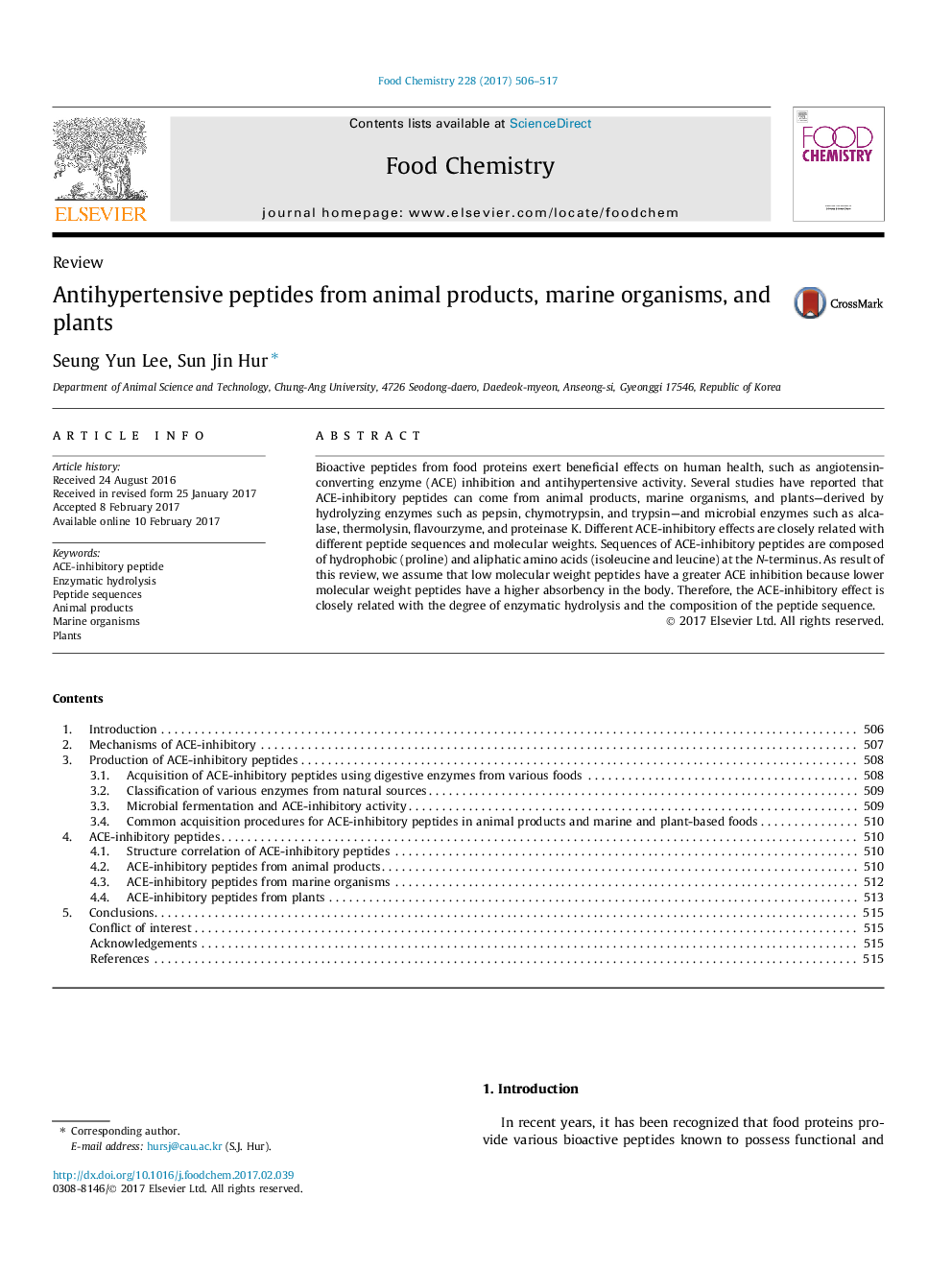| Article ID | Journal | Published Year | Pages | File Type |
|---|---|---|---|---|
| 5133809 | Food Chemistry | 2017 | 12 Pages |
â¢ACE-inhibitory activity is related to the degree of enzymatic hydrolysis and peptide sequence.â¢Optimal hydrolysis enzymes for animal products are pepsin, trypsin and chymotrypsin.â¢Optimal hydrolysis enzymes for marine organisms and plants are alcalase, neutrase and thermolysin.â¢ACE-inhibitory peptides are composed of hydrophobic amino acids at the N-terminus and proline.
Bioactive peptides from food proteins exert beneficial effects on human health, such as angiotensin-converting enzyme (ACE) inhibition and antihypertensive activity. Several studies have reported that ACE-inhibitory peptides can come from animal products, marine organisms, and plants-derived by hydrolyzing enzymes such as pepsin, chymotrypsin, and trypsin-and microbial enzymes such as alcalase, thermolysin, flavourzyme, and proteinase K. Different ACE-inhibitory effects are closely related with different peptide sequences and molecular weights. Sequences of ACE-inhibitory peptides are composed of hydrophobic (proline) and aliphatic amino acids (isoleucine and leucine) at the N-terminus. As result of this review, we assume that low molecular weight peptides have a greater ACE inhibition because lower molecular weight peptides have a higher absorbency in the body. Therefore, the ACE-inhibitory effect is closely related with the degree of enzymatic hydrolysis and the composition of the peptide sequence.
